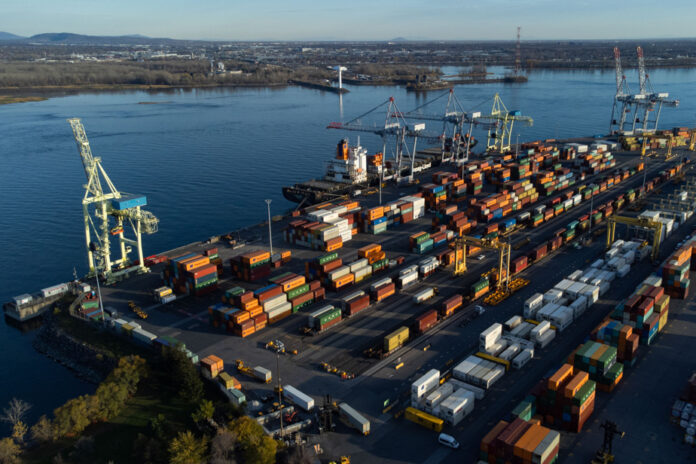Even before the start of expansion work in Contrecœur, the Montreal Port Authority (MPA) sees its president and CEO Martin Imbleau take off, learned La Presse. He moved to the helm of the VIA Rail subsidiary that managed the development of the high frequency train (TGF) between Quebec and Toronto.
According to our information, the news will be announced this week, perhaps even this Monday. It was not possible to reach Mr. Imbleau, who is currently away on vacation. Within the APM, it was unknown that he was preparing to leave the ship after a mandate of less than three years. The Trudeau government has not commented.
The appointment of the main interested party at the head of the VIA Rail subsidiary comes some two weeks after the unveiling of the names of the three consortia that will be able to bid on the rail corridor project which must serve cities such as Quebec, Montreal and Toronto. VIA TGF will operate independently of VIA Rail and will act as a project office. In particular, it will be involved in the technical design and engineering work, and will carry out consultations with the public, in addition to working with the private partner that will have been chosen.
For the Port of Montreal, Mr. Imbleau’s departure comes at a more delicate time. He has already indicated that volumes have been down in terms of container levels since the beginning of the year due to the economic context.
In addition, the MPA, a federal agency, has still not finalized its negotiations with the Trudeau government in order to obtain additional funding to absorb the cost overruns of the port terminal project in Contrecœur, in the suburbs south of Montreal.
Inflation means that this project will cost much more than expected. The budget oscillating between 750 and 950 million, mentioned until 2022, is a thing of the past. Citing government sources, The Globe and Mail cited a bill of up to $1.4 billion. The Toronto daily argued that the Port of Montreal wanted $150 million in federal aid. It was not possible to confirm this information.
Mr. Imbleau and his team had at least succeeded in convincing the Legault government to loosen the purse strings. In its most recent budget, tabled on March 21, Quebec released an additional $75 million, bringing its total contribution to $130 million.
The departure of Mr. Imbleau will be announced while the identity of the private partner of the APM in the Contrecoeur file is still unknown. This announcement is expected by the end of the summer. In principle, this private partner will have to participate in the financial arrangement of the Contrecœur project, like the APM. The expected change at the head of the federal agency should not slow down this process, believes Jacques Roy, professor of operations and logistics management at HEC Montreal.
A lawyer by training, Mr. Imbleau arrived at the APM on January 1, 2021 after a brief 10-month stint at Hydro-Québec. Previously, he had spent two decades at Énergir, formerly known as Gaz Métro. Mr. Imbleau therefore has experience in utility companies. This experience will serve him well at VIA TGF, where he will become the face of a project around which several questions are still unanswered.
If we have an idea of the consortia that covet the TGF project, it is still unclear whether high speed – trains capable of running at speeds greater than 250 km / h – will be integrated into the network. If so, there is no clue on the stretches where it would be deployed.
For now, the Trudeau government and VIA TGF prefer to ask the private sector to come up with a “reference” scenario and a more “ambitious” option, in which it will be possible to target sections where the speed of trains will be greater than 200 kph. After mentioning a range of 6 to 12 billion before saying that this forecast was no longer accurate, Ottawa does not want to advance on a potential budget for the moment.
However, the federal government has been less discreet with regard to a high-speed train (TGV), which it considers too expensive. Such a project – demanded by the business community and several players in the political sphere in Quebec – could cost up to 80 billion, according to government data recently provided to La Presse.
This is a federal agency that builds and maintains port facilities. It is also the company that rents them to stevedoring companies, i.e. maritime carriers. It is not the APM that employs, for example, the stevedores who are responsible for transhipping the goods. These are hired by the Maritime Employers Association.















